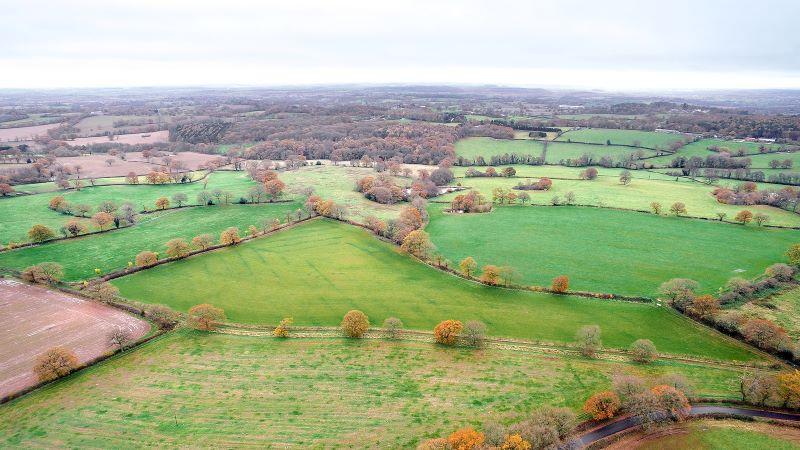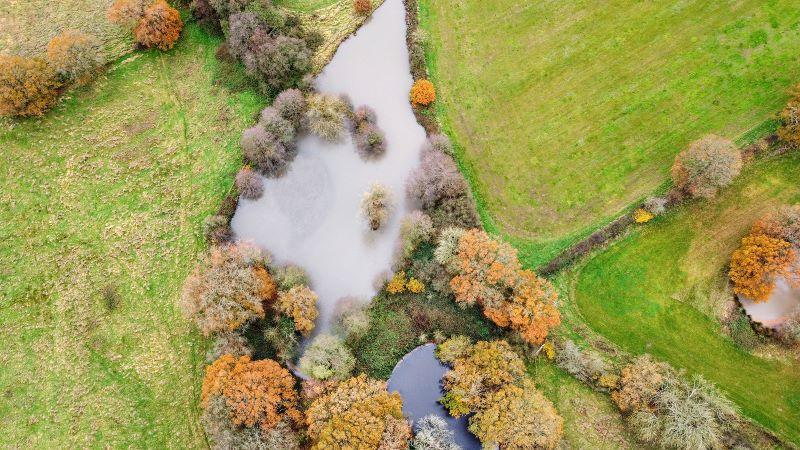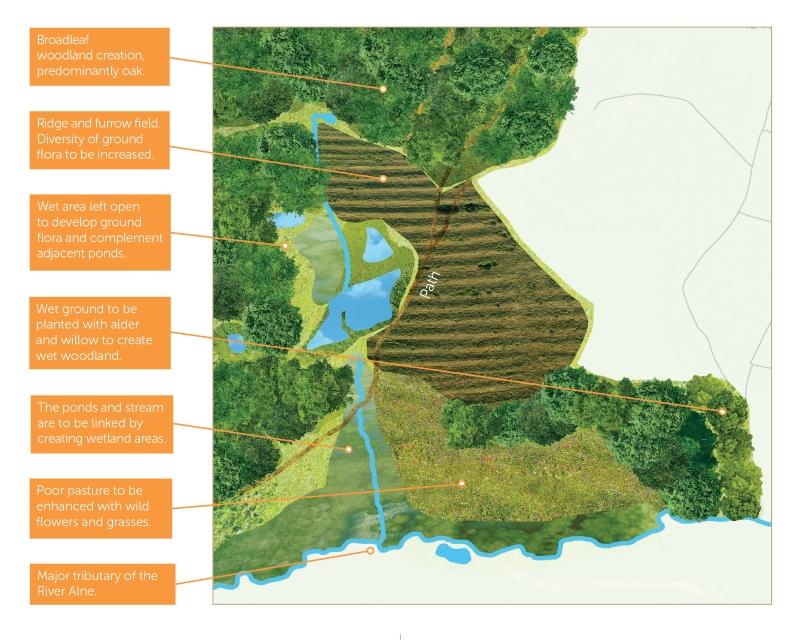
Forest design - creating Oak Wood
Last year we bought 90 acres of land at Trap’s Green in Warwickshire, now named Oak Wood because it neighbours Oakwood Farm. What was involved in designing this brand-new area of the Forest?
Growing the Forest
It can take anywhere from one to over three years from acquiring a piece of land to planting trees and shaping the Forest on the ground. In addition to consulting with neighbours and local communities, we undertake biodiversity surveys and Environmental Impact Assessment screening before designing our Forest plans. These plans then go through various government bodies before we eventually obtain permission to plant trees.
Constraints and opportunities at Oak Wood
Any land acquired must fit the charity’s criteria. We have a scoring matrix which includes how close it is to other land we own, whether it links with existing native broadleaved woodland, its biodiversity value and if it has the ‘wow’ factor.
Before we purchased the land at Oak Wood, we first looked at any constraints that would prevent us planting trees. This included whether there are archaeological features present, any power lines and/or gas pipelines which must have tree-free wayleaves, what access to the land is like and the proximity to neighbours.
We also looked at the opportunities that this land gave us. There are a high number of mature oaks in the hedgerows, which is different to elsewhere in the Forest. There is a Local Wildlife Site to the North and ancient woodland at Round Wood that we can link up to. The land fits in the valley, so is not a flat landscape, with old pastures that, with good management, could be improved for biodiversity.

Consultations and assessments
Working with the parish council, we held a public consultation for residents in December 2019. These consultations are an opportunity for neighbours to learn about our work and inform the plans we make for land near their homes.
Environmental Impact Assessment screening was carried out as part of obtaining official permission to create woodland. This involved seeking comment on our plans from different agencies and searches to aid design including:
- Consultation with the Environment Agency
- An archaeological search – if something is found then we leave a buffer or investigate further
- A protected species search – it is positive for the charity if this search finds something as it enhances the habitat
- Consultation with the RSPB
- Liaison with the Campaign for the Protection of Rural England
- Working with consultants to look at enhancing the site for wetlands
- Undertaking water sampling for great crested newts, a European protected species, in the pools
- Referring to an historic map of the site from the 1940’s
The Environment Agency recommended not planting trees immediately next to the stream, and that the wetter areas offered scope for enhancement. We took this potential constraint as an opportunity for us to create a more diverse mix of habitats at Oak Wood.
Turning tree planting constraints into opportunities
With land in the south of the holding to be left unplanted, we identified at an early stage that these areas could be improved by enhancing the existing pasture and creating wetland habitat.
A ridge and furrow field, although under-grazed at present, will benefit from conservation grazing. This will help to improve its floristic diversity.
The stream meandering along our southern boundary is a tributary of the River Alne. Creating new wetland habitats will further link existing pools and ditches to the stream. This will optimise the biodiversity opportunities in this part of Oak Wood.
Where the land lies wet in the eastern corner, we will plant a wet woodland of alder and willow as these species thrive in poorly drained soil.

A mosaic of habitats
The Forest is about more than just trees. The mosaic of habitats found within the Forest increases the diversity of plants and animals.
In the future, there will be new woodland, grassland and wetland at Oak Wood. We are certain this will be a massive environmental improvement over the existing land use, by increasing biodiversity and improving water quality in this tributary of the River Alne.
You can help us grow the Forest by donating just £5 a month. Find out about becoming a Friend of the Forest.



